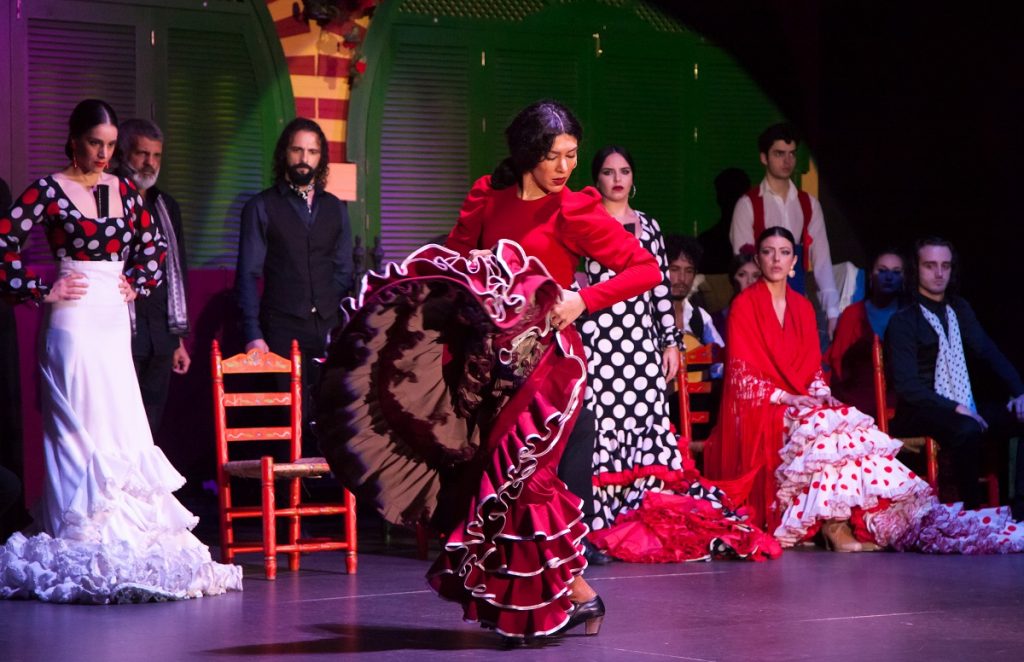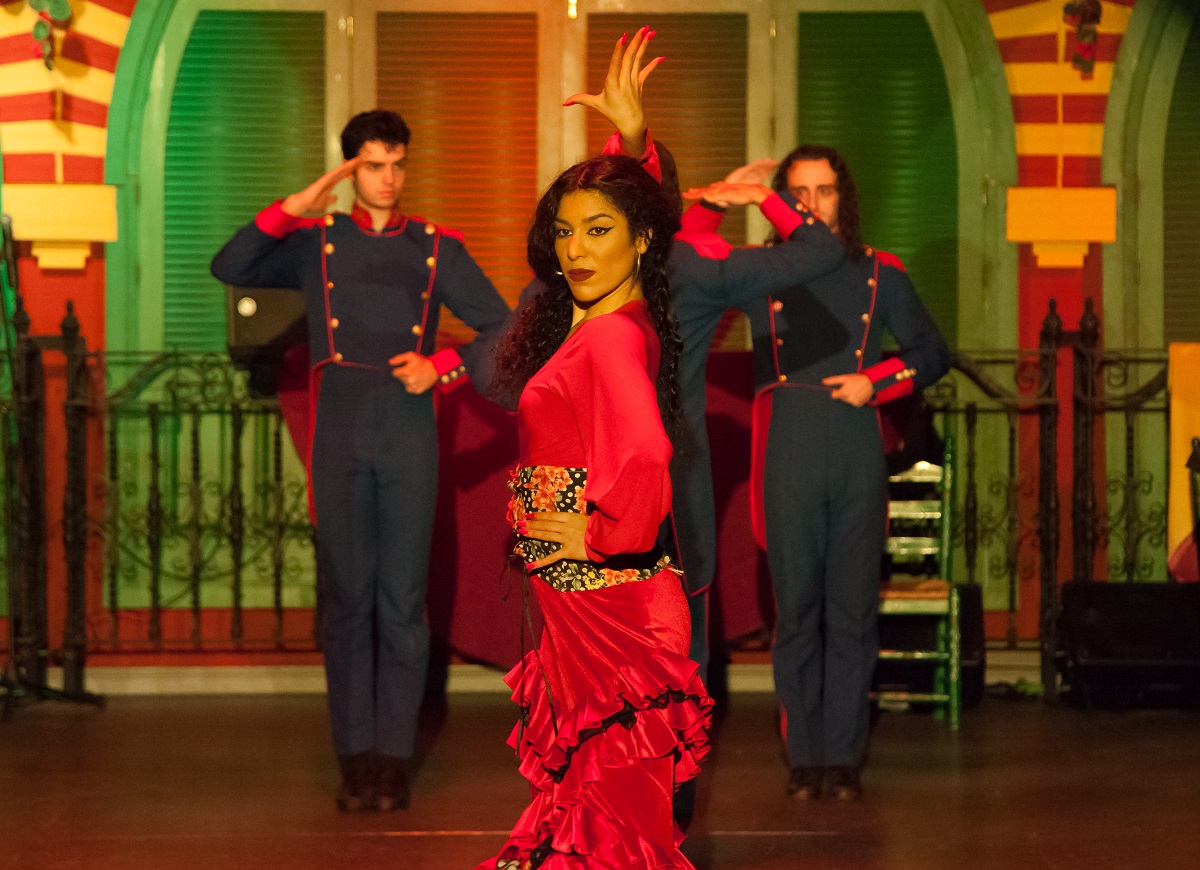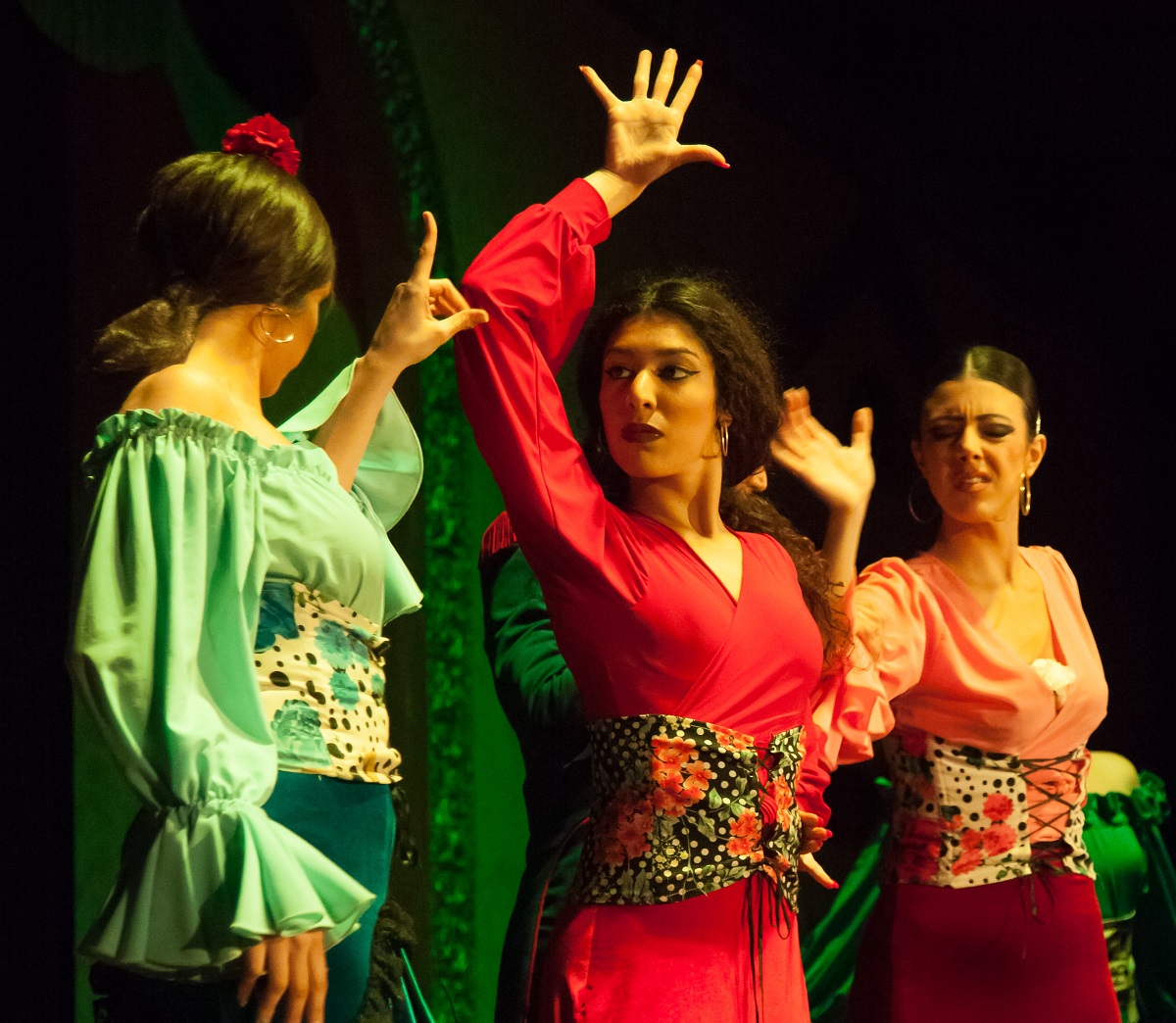
When Ana Oropesa started in classical ballet, it was very clear to her. “Mom, I don’t like this, I want to dance flamenco”. And she did it, until she became the flamenco dancer she is today. At the age of four, he began his training, first in various schools and, at the age of twelve, he entered the Professional Conservatory of Dance in Seville “Antonio Ruiz Soler”, where he obtained the Professional Teaching of Flamenco Dance.
She has completed her training by taking courses and masterclasses with artists such as Mercedes de Córdoba, a benchmark for her, La Moneta, Soraya Clavijo, Ana Moya or El Farru.
He says that “flamenco chose her” and that she cannot imagine her life dedicating herself to anything other than dancing. She doesn’t want to be like anyone, she wants to be herself. Her goal is to live professionally from dancing and be happy.
Linked with El Palacio Andaluz since May 2018, this young artist projects on the tablao what she is, “an emotional and strong person”. Her classmates define her as a “dancer of race”. It is. Ana Oropesa is pure feeling on stage. It is soul. It’s claw. It is flamenco. You have to see her dance.
In this interview, we invite you to learn a little more about this flamenco dancer who is part of the cast of artists on our tablao.
Question (Q): Ana, why is she a flamenco dancer? Tell us.
Answer (A): Why am I a flamenco dancer? From a very young age she has always listened to flamenco at home and it caught my attention. My uncle is a composer, he has many registered sevillanas, and my mother has always sung, although she has not dedicated herself professionally to it, it is like her frustrated career. When I was three years old I started in classical ballet, but when I started I said to my mother, “Mom, I don’t like this, I want to dance flamenco” and, before the age of four, I was already dancing flamenco.
(Q): What has your training been like?
(A): As a child I was taking classes at different flamenco schools. When I was twelve years old, I entered the Professional Conservatory of Dance in Seville “Antonio Ruiz Soler”, where I have been training and I have done Professional Education in the specialty of Flamenco Dance.
(Q): Have you complemented this artistic training?
(A): Yes, I have attended several masterclasses with Mercedes de Córdoba, one of the artists that I like the most at the moment, La Moneta, Soraya Clavijo, Ana Moya, el Farru … I have done a lot of courses during my formative stage.

(Q): Ana, even though you are very young, what has been your professional career until reaching El Palacio Andaluz?
(A): I have worked teaching flamenco in a music association and for extracurricular activities in various schools. I also participated as a flamenco dancer in an event in Quito, Ecuador.
(Q): Who are your reference artists?
(A): You always have to look back and find out how it has been and who has made history in flamenco. You have to know it well and this helps you to better learn the new. Of the classic dancers, I stay with Carmen Amaya, without a doubt. And of the most current artists, I like Mercedes de Córdoba and La Moneta. I don’t think about it either.
(Q): Ana Oropesa, how do you define yourself as a flamenco dancer?
(A): Ummm …. (thinks a little). My classmates say that my way of dancing is “like with a race, something more similar to the gypsy”. But I don’t know, I feel like a strong dancer. When I go on stage, I feel very strong.
(Q: So we say that Ana Oropesa is an artist with strength …
(A): Yes … wait, I already know what my dance is like. I think that dancing is a way of expression. When we dance, we show ourselves as we are. If you analyze a person who is dancing and you know how he/she is, you think “she/he is dancing as she/he is”. I am a very emotional person and I think that shows in my dance. In my life I am very expressive and that is also reflected when I get on the tablao.
(Q): What is the flamenco style with which you feel most comfortable dancing?
(A): With the ‘jondos styles’ I feel better than with the more festive ones. Especially with the soleá and the taranto they are with whom I feel more comfortable.
(Q): And what style do you enjoy most as a spectator?
(A): With them. It’s that when I see someone, whether I like it or not, you inevitably compare yourself. So, after all, you end up liking what most resembles you or what you feel most identified with.

(Q): Who would you like to look like?
(A): If I’m honest, nobody. I would like to take on many people, but always adapting it to my way of dancing.
(Q): Who would you like to share the stage with?
(A): With Mercedes de Córdoba or Pastora Galván.
(Q): You speak of flamenco dancers, any guitarist or singer?
(A): Well … I would have loved to dance with Camarón. If we talk about today, with guitarists … to accompany the dance it would be great with Juan Campallo. And as cantaoras (singers) I would like to do it with Mara Rey or Fabi.
(Q): How far would you like to go as a flamenco dancer?
(A): I don’t set an ambitious goal of “I want to get to the top”. My goal is to feel full with what I do, to be able to dedicate myself professionally to dance, live from it and be happy.
(Q): And what would you like them to say about you?
(A): I like that my classmates define me as “a dancer who has a race”, but I would like to be one more.
(Q): Tell us what the daily life of a professional dancer like you is like.
(A): You never stop learning and even less in flamenco. It is like everything, there are always things to learn and you cannot stop because there is a lot of level. You have to rehearse every day as much as possible and then be lucky, as we artists who work here, to put it into practice with guitar and singer.
In flamenco there is a non-verbal communication, between singer, guitarist and dancer, which is complicated … That there is that connection, that everyone understands each other and can carry it out well, it is magnificent.
(Q): How is the experience of getting on a flamenco tablao every day and facing such a different audience?
(A): At the beginning when I arrived at the tablao I was very afraid and respectful because it was one of the first times that I faced an audience and with such a large capacity as this. But over time, one gets used to it and gains experience. Now everything is different.
(Q): Why do you have to see the flamenco show at El Palacio Andaluz?
(R): It is a very complete show. Flamenco when you see it for the first time has an impact, it is so emotional, it carries a message so concise and with so many definitions …. Flamenco has a soul and the person who sees it captures it. And if you come to this tablao and enjoy such a complete show, which includes a Spanish classic, a fragment of the opera ‘Carmen’, with so many artists … It is a highly recommended experience.
(Q): For Ana Oropesa, what is flamenco?
(A): A way of life. I get up and go to bed listening to flamenco. It is my day to day. Linking with the world of flamenco was a decision I made since I was little. Now I don’t know what I would do without it. There comes a time when you have to choose between one thing or another and I took the path of being a professional flamenco dancer. But I have the feeling that it was flamenco that chose me.
Blessed choice. Here is proof of how this artist dances.
© 2024 El Palacio Andaluz. All rights reserved.